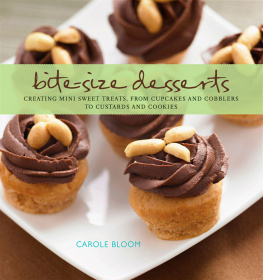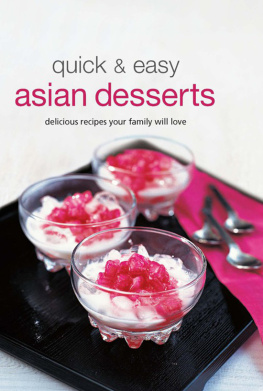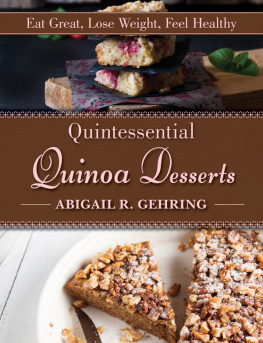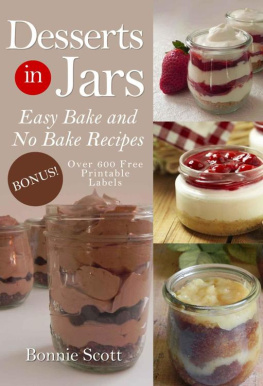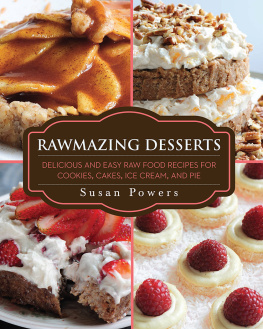The Harvard Common Press
535 Albany Street
Boston, Massachusetts 02118
www.harvardcommonpress.com
Text and photographs copyright 2012 by Shaina Olmanson
All rights reserved. No part of this publication may be reproduced or transmitted in any form or by any means, electronic or mechanical, including photocopying, recording, or any information storage or retrieval system, without permission in writing from the publisher.
Printed in China
Printed on acid-free paper
Library of Congress Cataloging-in-Publication Data
Olmanson, Shaina.
Desserts in jars : 50 sweet treats that shine / Shaina Olmanson.
p. cm.
Includes index.
ISBN 978-1-55832-798-6 (spiral bound)
1. Desserts. 2. Storage jars. 3. Cookware. I. Title.
TX773.O46 2012
641.86dc23
2012000320
Special bulk-order discounts are available on this and other Harvard Common Press books. Companies and organizations may purchase books for premiums or resale, or may arrange a custom edition, by contacting the Marketing Director at the address above.
Author photograph by Stephanie Meyer
10 9 8 7 6 5 4 3 2 1
For my grandmother, who taught me how to give a piece of myself through the food I make.

Introduction: A dessert in a jar
They are a trend today, but desserts in jars in fact are timeless. A number of friends have shared with me that their grandmothers tucked desserts into their canning jars, for backyard garden parties or Sunday afternoon picnics. The jars were what they had at hand, and really, the practicality of it makes sense.
In a day and age where so much of what we use day in and day out is disposable, using glass jars as a serving mechanism or a gifting vessel for dessert is a way to make the entire package reusable. Whether you go on to put up food in them after the dessert is long gone or repurpose them for another household use, jars are containers that have a multitude of usage possibilities.
Eco-friendly and multi-purposeful, glass jars win points for aesthetics as well. They can be a cute and decorative gift that requires just a simple ribbon and gift tag as packaging, and they can also find a place at a respectable dinner party. They can be well received and at home during an outdoor vintage wedding.
They are easy to package and carry with just a lid, a towel, and a sturdy basket or box. Desserts in jars require no plate or bowl, making them less susceptible to landing in your lap or on the ground next to you while eating outdoors. All that is necessary is a proper utensil, a simple fork or spoon, and youll be on your way to digging into a delicious treat.
CHOOSING THE PERFECT JARS
There are a variety of canning and Mason jars on the market, in many different sizes, prices, and designs, and with a range of closing mechanisms. This leaves a world of possibilities out there to explore when youre looking at serving dessert to guests, shipping jars in the mail, or giving mixes as gifts. You always want to use clean, chip-free jars. Never use jars that have been chipped or cracked in any way. Two more things to consider are the size of the opening or mouth of the jar and the height of the jar from the mouth to the bottom.
First, lets consider the jar opening or mouth. Jars typically come in one of two sizes of opening: standard or wide-mouth. Most standard jar openings are 2 inches in diameter, while wide-mouth openings are 3 inches across. There are other styles of jars that have openings specific to the brand or design of the jar. When making a dessert that requires you to reach into the jar to pack it, as you will do with a cheesecake crust or a layered parfait, a wide-mouth opening will give you more room with which to work.
Next lets look at the height of the jar. There are several reasons you may choose one height over another, from presentation to ease of eating, but the most important thing to consider is content. When filling a jar with a layered dessert where you ideally want one fork- or spoonful to contain all layers of the dessert, a shorter jar will make the process much easier. Taller jars can be used for desserts without layers, such as the Almond-Poppy Seed Cakes, . These types of desserts lend themselves well to jars with taller sides.
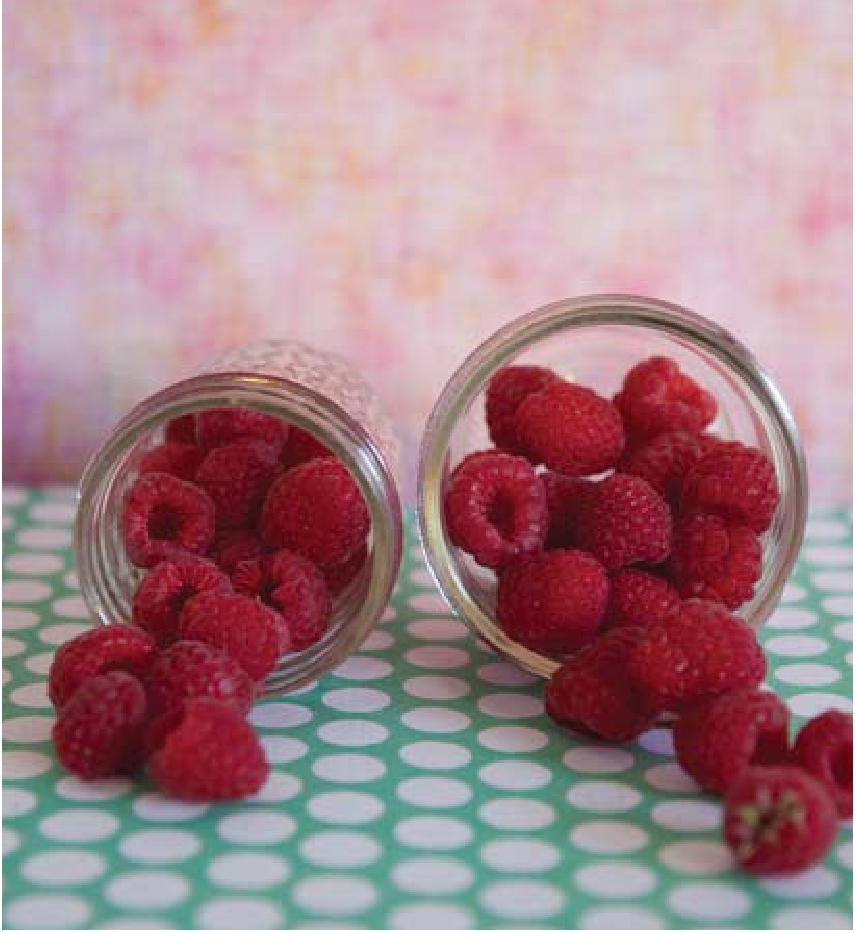
Finally, think of the serving size of the dessert that will be presented in the jar. While the recipes in this book suggest an approximate jar size, youll want to use jars that provide an appropriate serving. Exact jar sizes can differ from company to company, but for single-serve desserts you want to look for jars in the 4- to 8-ounce range. For mixes the jar size will be determined by the recipe but generally are best when packaged in pintor quart-sized jars. The recipes in this book give guidance for jar sizes that are appropriate to them.
FILLING JARS
Just as when you fill muffin cups, frost cupcakes, make cake pops, or roll out cookie dough, filling jars with doughs, batters, or custards works best when you follow a few tips and use a few tools that help make the process go more smoothly.
Scoops (often called cookie scoops or baking scoops) work great for adding cake batter and puddings to jars. Simply scoop up the appropriate amount of batter or filling and drop it into the jar opening.
Pastry bags and tips are great tools to have on hand when frosting cakes like the Vanilla Bean Cupcakes, , and they also make it easy to pipe puddings or mousse into jars. Zip-top bags are an easy item you may have on hand that can substitute for pastry bags.
While not necessary, funnels can come in handy when adding liquids to jars. Youll want to use funnels that are appropriate for the jar size or the consistency of the liquid. A canning funnel works well when adding heated jams or jellies, and also comes in handy when adding the chocolate cream mixture for the Dark Chocolate Hazelnut Pots de Crme, .
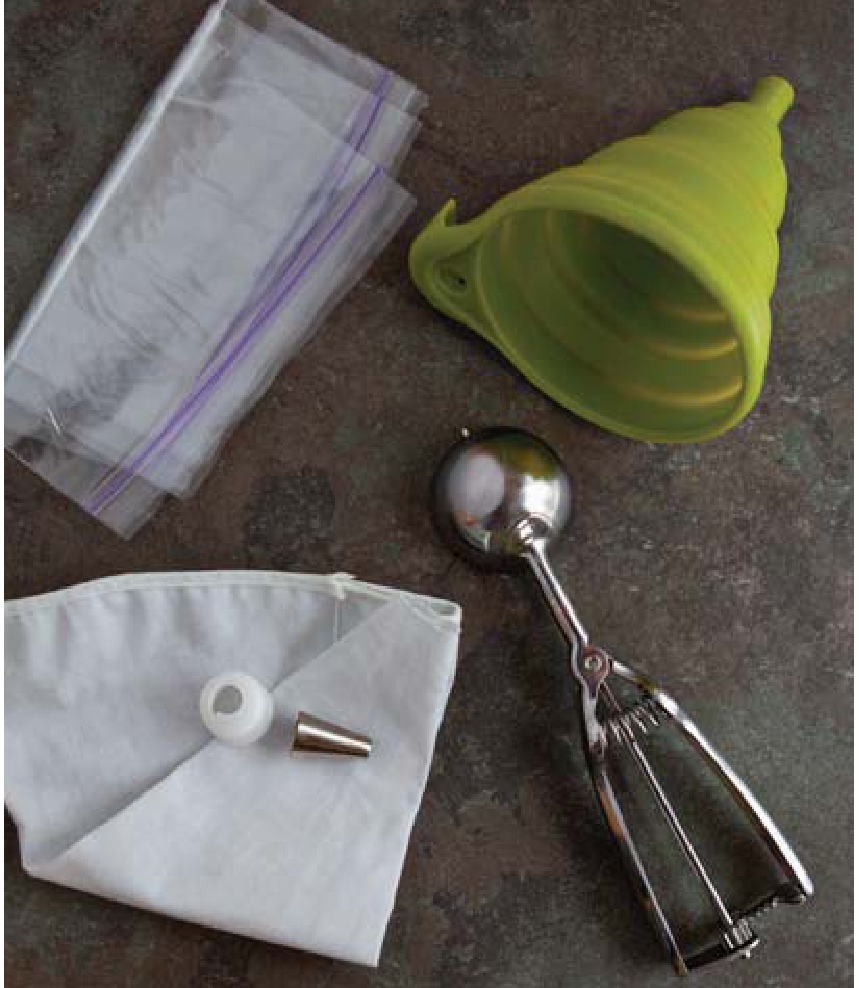
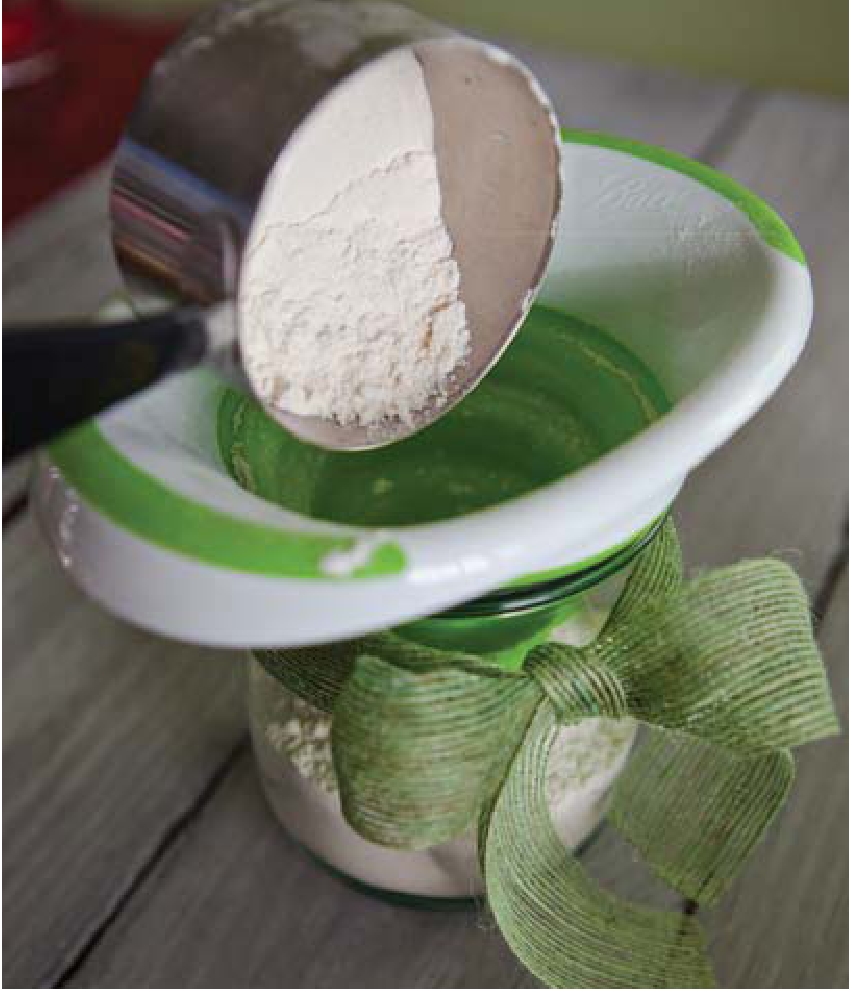
BAKING IN JARS
Some of the recipes in this book require you to bake cakes or custards in the jars. There are two different methods you will see: one uses a baking sheet, the other a water bath. As when baking with any type of glass container, extreme fluctuations in temperature can cause the glass to break. This is similar to when you use jars for canning: You wouldnt want to move hot jars from a hot water bath directly to a cold, flat surface. Likewise, we want to keep hot jars fresh from the oven from coming in contact with cold surfaces and extremely cold jars from being placed in hot ovens.
BAKING DESSERTS IN JARS ON A BAKING SHEET
Many of the cakes, pies, and pastries in this book are baked on a baking sheet. After your oven has preheated and your jars are filled with the batter, place them on a baking sheet 1 to 2 inches apart from each other. Place the baking sheet in the oven and bake as directed. When the desserts are finished baking, remove the sheet from the oven to a clean, dry surface insulated with a dry towel or hot pads and allow to cool.

Next page

